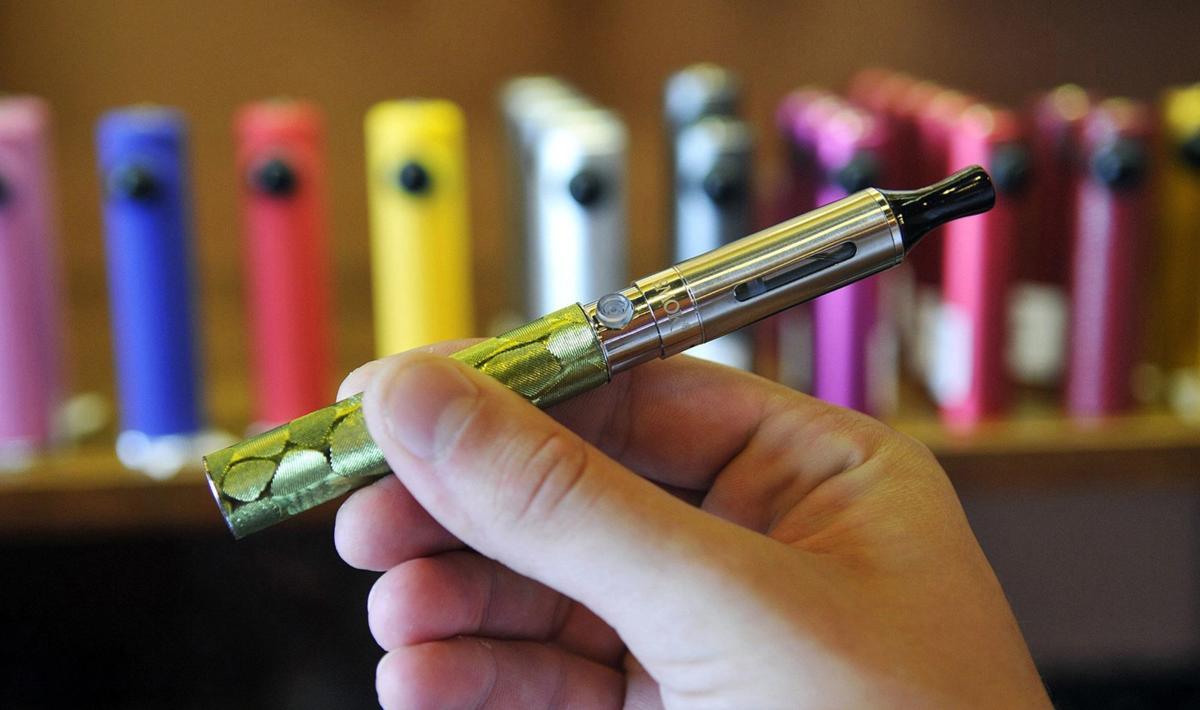Pima County has teamed up with high school students across the Tucson area to educate teens about the dangers of vaping nicotine and marijuana.
The campaign, called the Real Deal on Vaping, calls on students to post about the health risks associated with vaping on social media. The county first started pulling together the initiative in November, according to Pima County School Superintendent Dustin Williams.
The Pima County Health Department and Superintendent’s office chose to put students at the forefront of the effort because teens are more likely to listen to their peers than to adults, Williams said.
“Students came out and were like … it can’t be the same old deal,” Williams said.
Seventeen Pima County school districts have signed on the to the campaign so far, Williams said. The Health Department has also brought in a handful of community partners including the University of Arizona, which will go into individual school sites and track student vape usage as part of a $1 million research grant.
One in five high school students has tried vaping at some point, according to Judith Gordon, the interim dean of research at the University of Arizona’s College of Nursing. Juul, a sleek USB-shaped vaporizer that comes in flavors such as mango and creme brulee, is especially popular among middle and high school students, she said.
Many people suspect students try vaping because of peer pressure, and that’s not untrue, according to Gordon — many students do try it in an attempt to fit in with their classmates. Most students who choose to vape, do so in hopes it will mute their stress and anxiety, she said.
“The vast majority (of students) say they do it to relieve stress, or relax or as a coping mechanism,” Gordon said.
This makes sense, from a neuroscientific standpoint, according to Gordon. Adolescents, who are struggling with mental health issues more now than they ever have, get a strong dose of dopamine, one of the chemicals that makes us feel pleasure, every time they hit a nicotine-based vaporizer.
Vaporizers and e-cigarettes tend to deliver higher concentrations of nicotine at faster rates, Gordon said, which only intensifies the buzz kids experience. One Juul “pod,” for example, has the same amount of nicotine as an entire pack of cigarettes.
This leads to kids getting hooked faster and makes it harder for them to quit, Gordon said. That’s because nicotine use physically changes the anatomy of teens’ still-developing brains.
Adolescents using nicotine products develop more dopamine receptors in their brains. This causes them to feel heightened pleasure when they vape, Gordon said, but it also causes them to experience heightened withdrawal symptoms if they try to stop using nicotine products.
CONVINCING THE KIDS
Teens are rebellious, in their nature, Gordon said. So getting them to buy into a prevention effort like the Real Deal requires a multi-faceted approach.
Education is everything when getting youth to buy into why they shouldn’t do something they think will make them fit in with their peers — educating them about the short- and long-term health risks associated with vaping, and educating them about how tobacco companies are manipulating them for profit.
School districts also need to educate students about how to develop better ways to deal with their stress and anxiety.
“We need to work with our youth to help them identify healthy coping strategies,” Gordon said. Those strategies could include peer support groups, like the ones the Real Deal campaign promises to roll out; meditation training; talk therapy and other types of interpersonal support.
Cholla High School senior Adriana Noriega, a leader of the Real Deal campaign, said she considered vaping after a friend said it helped him cope with his school-related anxiety.
“He told me it was going to help with my stress,” she said. “He said it wasn’t a big deal.”
Noriega ended up declining the offer after reminding herself it would only mitigate her anxiety for a few minutes, she said. But she agrees with Gordon that most students turn to vaping because of mental health issues.
“Youth think the best way to get rid of their problems is to ignore them the 10 minutes they’re smoking their vape pen,” Noriega said.
Breaking down the stigma associated with talking about mental health struggles and having greater access to mental health professionals at school would mitigate the vaping epidemic, in Noriega’s opinion.
“I think it’s making things like social workers and counselors more accessible,” she said. “It’s kind of scary to talk about your problems. … But my social worker at my school has helped me tremendously.”
NO MONEY, MORE PROBLEMS
In-school mental health and support services don’t come free, though, and Arizona — one of the worst-funded states in the country as far as public education goes — already has a 900-to-one student-to-counselor ratio.
So lobbying for more state funding to put toward school counselors and other support staff is key, according to County Superintendent Williams.
“It’s out of control,” he said. “We’re 49th now for funding. School districts have been backlogged for years on funding. … I’m really concerned about the mental aspects of kids today in school.”
For now, though, the county is focusing on getting the Real Deal campaign off the ground, Williams said. It is working to get vaping task forces up and running at schools across Tucson and throughout Pima County as soon as possible.
“Our ask for students is that most of this be done through social media and with grassroots efforts (because) they’re kind of the catalyst,” Williams said. “Now comes the real work.”





